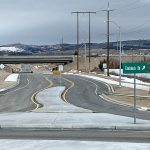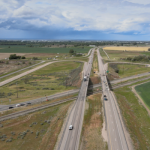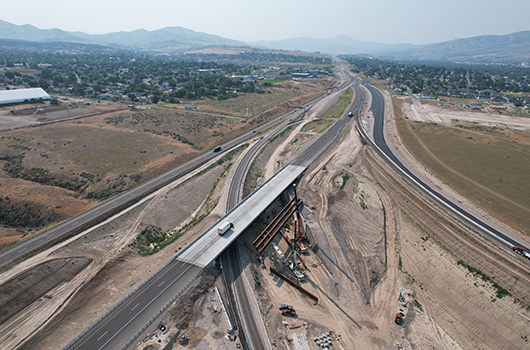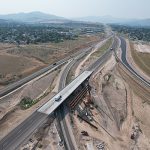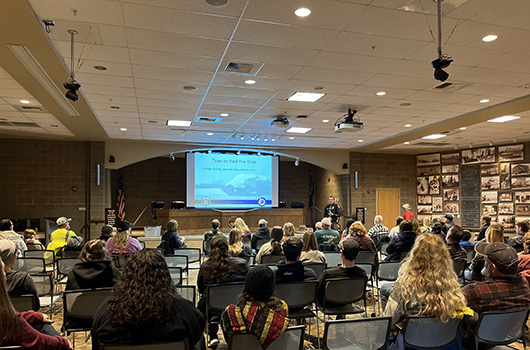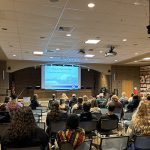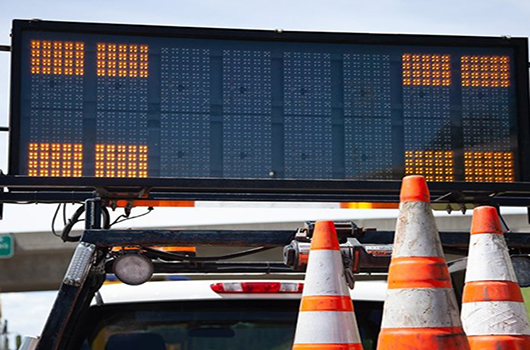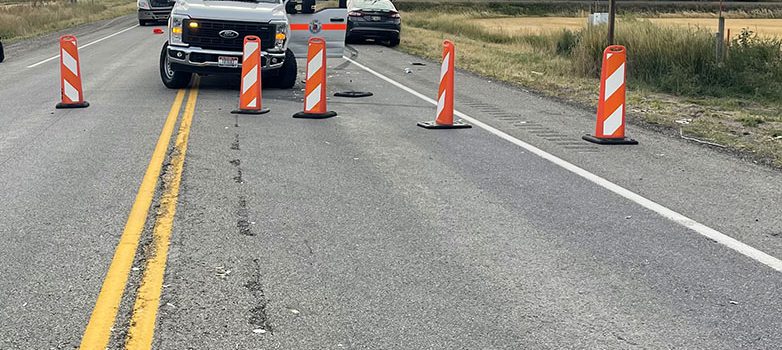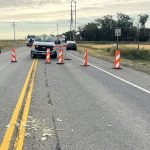System Interchange project enters final year of construction
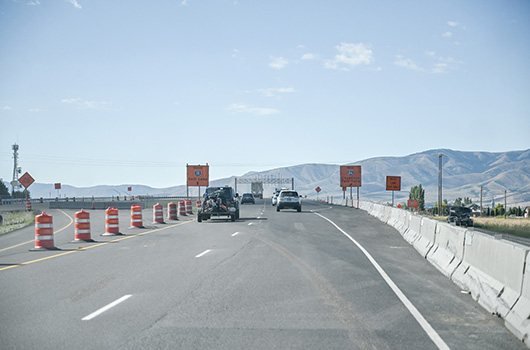
The Idaho Transportation Department’s $112 million rebuild of the System Interchange for Interstate 86 and Interstate 15 at Pocatello is entering its final year of construction with crews working in multiple areas throughout the worksite.
Five bridges were built in the last year, bringing the project total up to eight new structures. Two of the new bridges are steel and measure 414 feet long each. The other three bridges are concrete and measure a total of 387 feet in length. The construction of these bridges included 725 feet of 8-foot diameter concrete shafts installed underground for bridge foundations. In addition, 10,000 feet of steel piles were also driven underground for bridge foundations.
The massive project registered other impressive statistics in 2024:
- 247,319 cubic yards of dirt moved.
- 143,500 tons of structural dirt imported.
- 4,000 cubic yards of concrete poured.
- 55,894 tons of asphalt placed.
- 568,862 pounds of metal reinforcement installed.
In the coming year several items will be completed to button up the project.
- The new southbound-to-westbound ramp will be completed.
- The old northbound-to-westbound ramp will be removed.
- The temporary southbound-to-westbound ramp will be removed.
- The roadway north of the Pocatello Creek on-ramp will be built to its final grade. This will allow movement from Pocatello Creek to Chubbuck and remove the detour currently in place.
- The new Chubbuck Road underpass roadway will be completed.
- A chip seal will be applied to extend the life of the new asphalt pavement installed by the project, and the road will be restriped to its final lane configuration.
- Bridge approaches will be smoothed out to remove bumps made during construction.
Construction is anticipated to be completed in August.
“We appreciate the community’s patience as ITD continues to work with the contractor to button up work items and complete the remaining tasks for this historic project,” Project Manager Greg Roberts said. “ITD is excited to see the travelling public use this updated system interchange for years to come.”
Originally built in the 1960s, the I-86 and I-15 System Interchange is undergoing a rebuild to improve safety and replace aging infrastructure.
Motorists should carefully follow signs and posted speed limits while traveling through the construction area. With crews working day and night at the System Interchange it is especially important that drivers be alert and travel safely.
Motorists are encouraged to use 511.idaho.gov or the 511 app to keep track of project detours. Project details are available on ITD’s projects website at itdprojects.idaho.gov/pages/i-86i-15-system-interchange.





